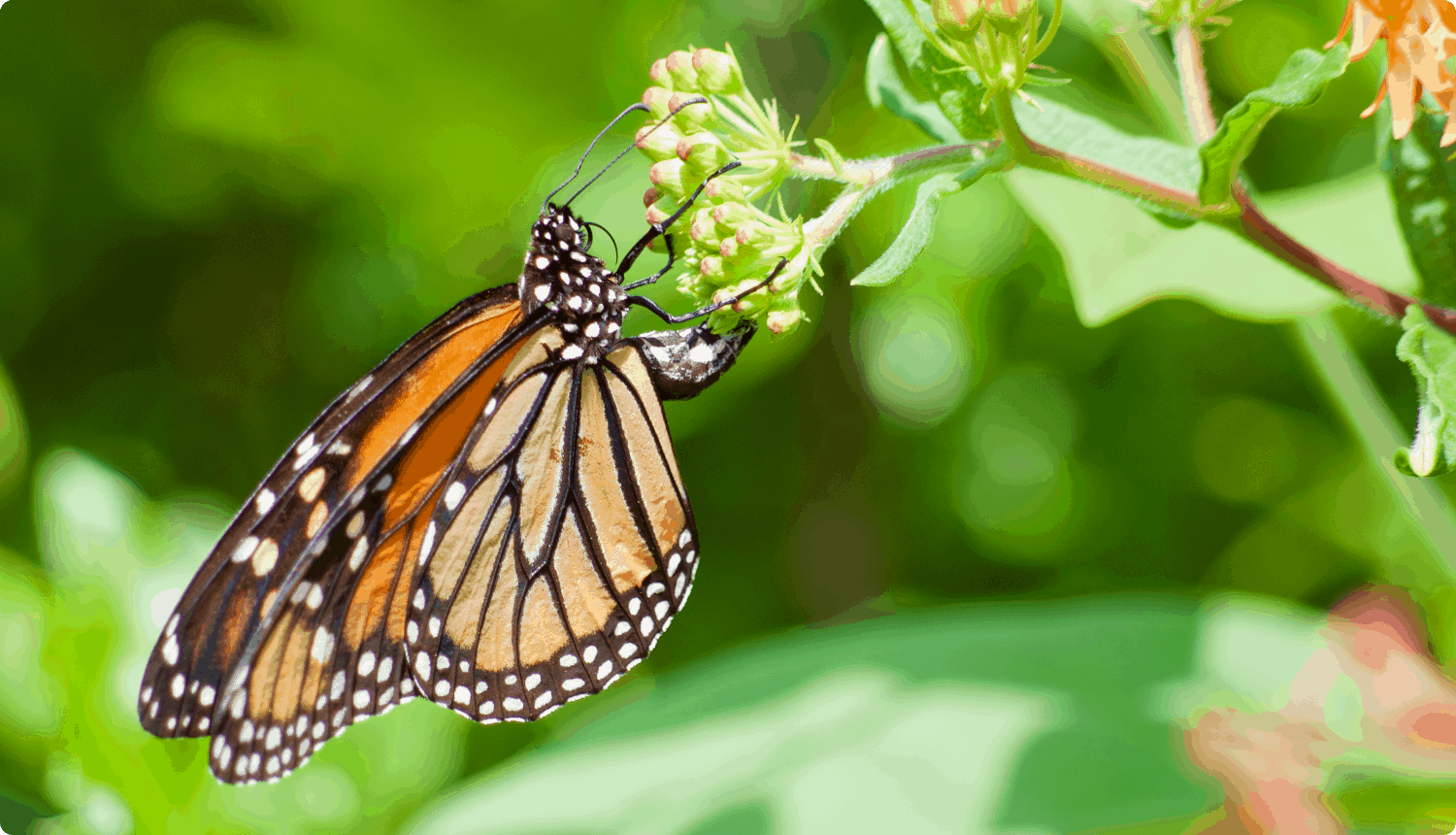
Species
Monarch butterfly (Danaus plexippus)
Principal Biologist(s)
Dustin Long
Project Location
Z Bar Ranch, KS
Bad River Ranches, SD
Avalon, FL
Nonami, GA
Conservation Problem
The primary threats to monarch butterflies and other native pollinators are habitat loss and pesticides.
Project Goals & Objectives
We aim to conserve and restore milkweed and other wildflower communities on Turner properties to benefit monarch butterflies and other native pollinators.
The primary objective of this project is to manage and increase suitable habitat for monarch butterflies and other native pollinators on Turner properties through milkweed (Asclepias spp.) and native wildflower plantings. Within five years we aim to double the overall milkweed plant density and establish a robust A. incarnata population at the Z Bar and establish stable milkweed populations of not less than 500 plants representing four species at both Avalon and Nonami. Over the next three years will recruit two additional Turner properties into the project.
Most Turner properties lie within the spring and fall migration route of the monarch butterfly and can reasonably be expected to support monarch populations through milkweed/wildflower restoration and conservation. The Z Bar Ranch and Avalon are particularly important to monarch butterfly conservation because those two properties lie at the northern end of the region where the first generation of monarchs migrating north from Mexico lay eggs setting the foundation for the 2nd and 3rd generations to continue the species long migration north.
Most Turner properties have extant populations of milkweed; however, many of those populations are widely scattered, homogenous, and persist at very low densities. Without active management milkweed species richness and densities are unlikely to naturally increase.
Project Background
In response to the unprecedented loss of such an iconic, transnational insect the TESF has teamed up with federal, state and non-profit partners, secured funding, and began multiple monarch butterfly habitat conservation and recovery projects on Turner properties. Central to this effort will be restoring extirpated milkweed species and wildflowers to Turner properties and adapting land management practices to benefit these early successional plants. These plantings and land management practices will benefit other wildlife species including other native pollinators and as the project matures we will include rare and endangered milkweed species (e.g., A. meadii).
In 2016, our efforts included milkweed and monarch butterfly surveys and milkweed/wildflower plantings on four properties.
Z Bar Ranch, KS. Milkweed surveys in 2015 resulted in four species being located within transects indicating an overall milkweed density of 1 stem per 207 square meters (830,869 milkweed stems on the Z Bar). Milkweed surveys in 2016 resulted in 91 stems representing 6 species (A. latifolia, A. asperula, A. pumila, A. viridis, A. stenophyllaand, A. viridiflora) being located and identified within the transects which suggested a dramatic increase in overall milkweed density to 1 stem per 32 square meters (5,374,687 milkweed stems on the Z Bar). Additional milkweed species identified on the ranch but not located within transects in 2016 were A. speciosa (some very robust populations), A tuberosa and A. verticillata. Spring and fall monarch butterfly surveys indicated the Z Bar was utilized significantly more by monarchs in the fall than in the spring.
Nonami, GA. The TESF and the USFWS partnered to plant 658 milkweed plugs representing 5 species (A. tuberosa, A. incarnata, A. humistrata, A. verticillata, A. amplexicaulis) at several locations on the Nonami golf course.
Avalon, FL. The TESF and the USFWS partnered to plant 512 milkweed plugs representing 3 species (A. incarnata, A. perennis, A. tuberosa) and 12 plugs of a related species (Gonolobus suberosus) at various locations on the property.
Bad River Ranches, SD. TESF planted 457 milkweed plugs (A. incarnata, A. syriaca, A. speciosa and A. verticillata) at Bad River.
Proposed Future Activities and Considerations:
Going forward, we will expand our efforts to other properties and will focus on 1) developing land management practices that promote milkweed and native wildflower establishment, and 2) the reintroduction of rare and extirpated milkweed species to Turner properties. At the four properties currently involved with this project we will survey to determine milkweed species richness and population density, survey for monarch butterfly eggs and larvae, and assess the success of the 2015-2016 milkweed/wildflower plantings.
